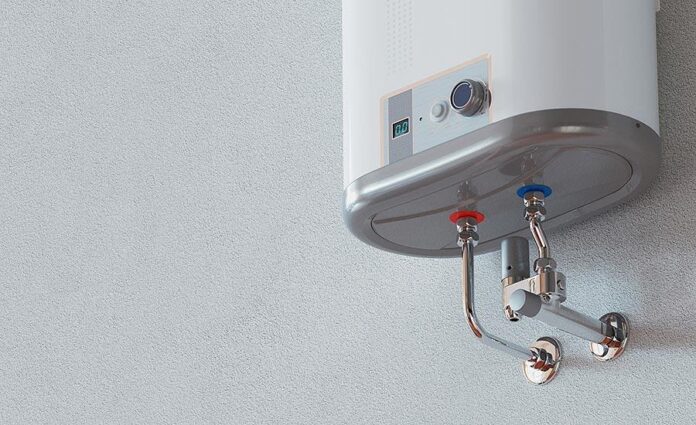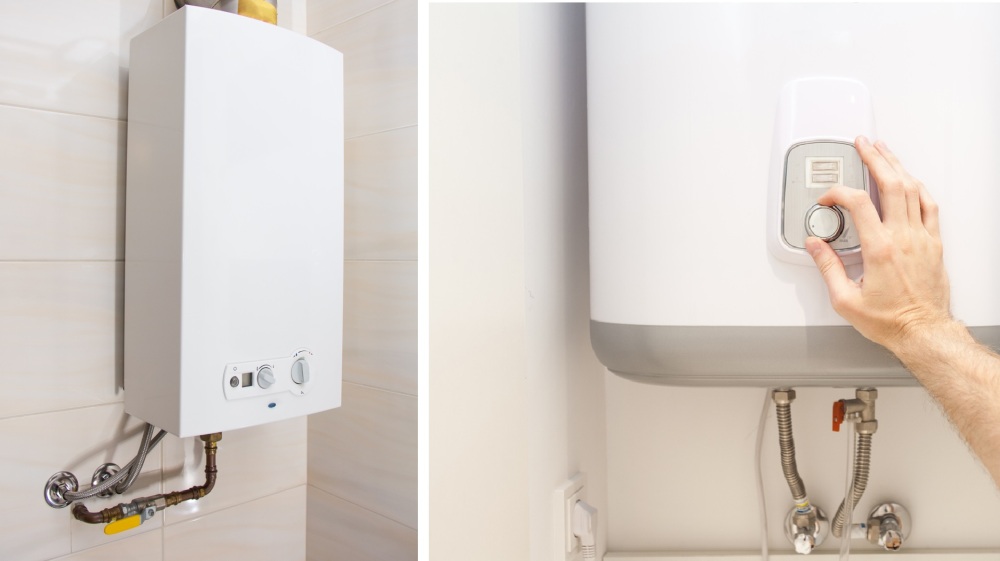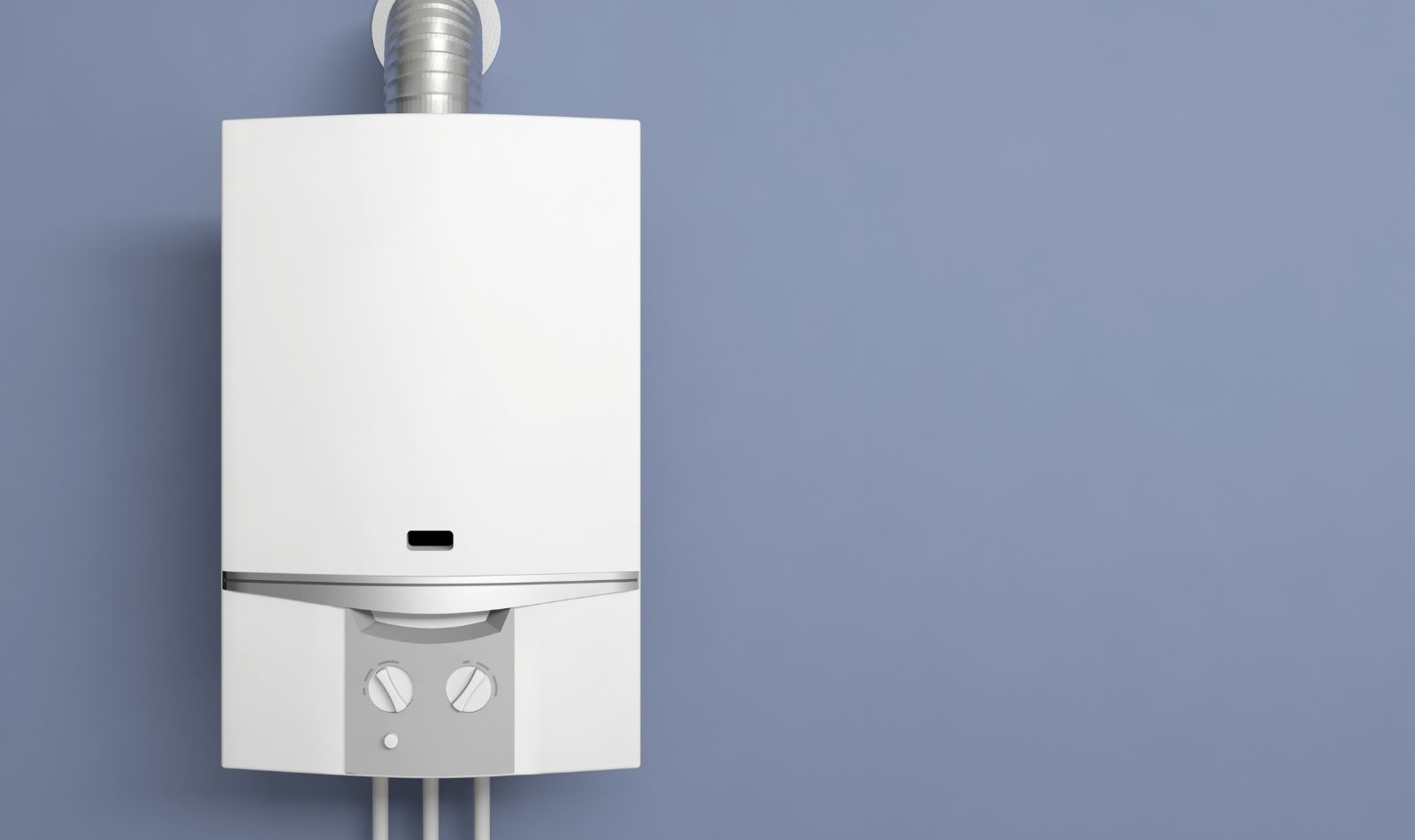To obtain adequate living comfort, hot water is an aspect of primary importance. Normally it is a service offered by the boiler of the heating system but often a water heater is used. There are different types of boilers on the market and in this guide, we will deal specifically with gas-operated models, analyzing the main factors to be taken into consideration in order to make a satisfactory choice.
1. Operation of the gas water heater
Gas water heaters are basically divided into two categories: open chamber or sealed chamber. There are substantial differences that it is good to know and take into consideration when buying.
Open chamber gas water heater
This type is also defined as natural draft, which indicates how the combustion air is taken directly from the surrounding environment. At the front on the body of the device there are slits to allow air to enter. The combustion generates exhaust fumes which are expelled by means of a vertical flue up to the roof or through a different passage to the outside.
The big limitation of this category lies precisely in its operating principle. The fact that the combustion chamber is not hermetically insulated can lead to the dangerous dispersion of the exhaust fumes into the surrounding environment due, for example, to a bad draft or a partially occluded flue. It is the reason why the law prohibits installing an open chamber water heater in the bathroom or kitchen and generally inside the house. The positioning must be carried out outside on balconies, terraces and in special niches or in well-ventilated service rooms.
Sealed chamber water heater
As you can easily guess from the name, this type is characterized by a combustion chamber completely isolated from the surrounding environment. The draft is not natural but rather forced, with the air drawn in from the outside through a suitable duct. A second pipe will expel the exhaust gases without any danger that they can spread in the room where the water heater is installed.
The characteristics of a sealed chamber model allow for installation in any area of the home including the bathroom, kitchen and even the bedroom if desired. Of course, it is possible to choose models to be mounted directly outside.
2. Water flow
From a technical point of view, the best water heater in India is a very simple appliance with few variables to consider. One of these is the water flow, that is the quantity of hot water for sanitary use that it is able to supply. The water to be heated passes through a coil in contact with the flame generated by the burner, and then ends up at the user who requested it. The greater the volumes of the house, the greater the water requirement and consequently the need to choose a water heater with adequate flow rate to avoid the risk of running out of hot water.
In principle, for a 100 square meter apartment where you want to heat the water in the bathroom and kitchen, a device with a water flow of 11 liters per minute is sufficient. Value that rises for larger homes and in case the utilities are particularly distant from the boiler.
3. Installation
As we have already anticipated, an open chamber water heater cannot be installed inside bathrooms and kitchens but must be placed outside or in adequately ventilated rooms. In any case, if you choose a model with natural draft installed internally, you must take into account the creation of an opening of 100 square centimeters towards the outside (corresponds to a window of 10 x 10 centimeters). Unnecessary intervention using a sealed chamber boiler, except if there is a gas hob in the kitchen.
The installation foresees for both types the connection to the methane pipes and the water system. To this must be added the positioning of a vertical flue or a duct towards the outside to expel the combustion gases. The sealed chamber water heater needs a second hose to suck in the air.
We remind you that for installation it is necessary to contact a qualified technician who will have to issue a certificate of conformity certifying that the assembly has been carried out in a workmanlike manner in compliance with the regulations in force.
4. Maintenance
For maintenance there are no particular differences. The law does not require a periodic check as for the boilers; however, it is advisable to check it at least every two years. The biggest problems concern the limescale that can deposit in the coil and the cleaning of the flue: aspects that, if neglected, can compromise the performance of the water heater and the safety of the system.
5. Price
The last aspect to consider is the price. An open chamber gas water heater is decidedly cheaper even if it offers installation limits and lower efficiencies. A sealed chamber model requires a higher initial outlay but guarantees better flexibility and safety. The choice between one or the other category depends on the type of intended use and specific situations. In general, it is advisable to focus on the sealed chamber type, opting for a natural draft boiler only in the case of outdoor installation or where occasional use is foreseen.




















